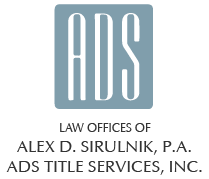
Underwriting a commercial real estate (CRE) investment is a critical part of evaluating a property and its potential. If you’re considering investing in a strip mall in SoFla, there are several variables you need to factor into your financial modeling.
In this article, we’ll discuss how underwriting is used in commercial real estate transactions and what you need to look out for when it comes to purchasing a retail property in Miami-Dade County in particular and across Florida in general.
How is Underwriting Used in Commercial Real Estate
Underwriting is an important process that helps investors evaluate the risk and rewards of their purchase. Banks issuing loans also go through an underwriting process to assess the risk of lending to a potential customer.
When making a large investment decision of any kind, underwriting gives future owners, brokers and lenders a better picture of the property’s projected cash flow and value.
This being said, looking at the lease agreements in place is essential. If rents are well below market rate, there is a potential that the property is well undervalued and simply by bringing the rents up to market rate will significantly increase the value of the property. But if the leases are locked in for years, that reduces the property’s NOI and thus the value. It is essential to have an experience commercial real estate attorney evaluate the lease agreements in place to determine whether this is an option or is not.
What to Watch Out For When Underwriting a Strip Mall Purchase
The underwriting process for CRE properties differs for those that are existing versus those that are being developed. For existing strip mall properties, here are some variables to account for in your modeling. Keep in mind that the better your data, the better your predictions will be. Run several different scenarios to get a more complete picture of potential outcomes.
- Vacancy rate – Strip mall tenants come and go, so you must account for turnover in your modeling. In addition to factoring in a period of downtime between tenants, be sure also to account for any improvements you may make to the space between lease periods (or any tenant improvement allowances you may approve).
- The status of existing tenants – Get to know the existing tenants and their current lease terms. Make predictions about how likely you think they are to renew when the time comes and what costs are associated with renewing the existing tenant versus finding a new tenant to occupy the space.
- Operating expense growth – How much do you expect operating costs to increase on an annual basis? Knowing that, will you also be able to increase the amount you charge for rent to keep pace with these rising costs? Ongoing operating expenses as well as capital expenditure reserves need to be factored into your expense calculations.
- Dept payments – What are your financial obligations? All money going out and money coming in must be accounted for during underwriting.
Your underwriting analysis should include all variables related to the property’s potential income and expenses. Knowing this information, paired with the property’s expected rate of return (cap rate), can help you make a well-informed and strategic investment decision.
To learn more about underwriting commercial properties in Florida or to ask your questions about real estate law and investment, get in touch with our team at the Law Offices of Alex D. Sirulnik, P.A.



